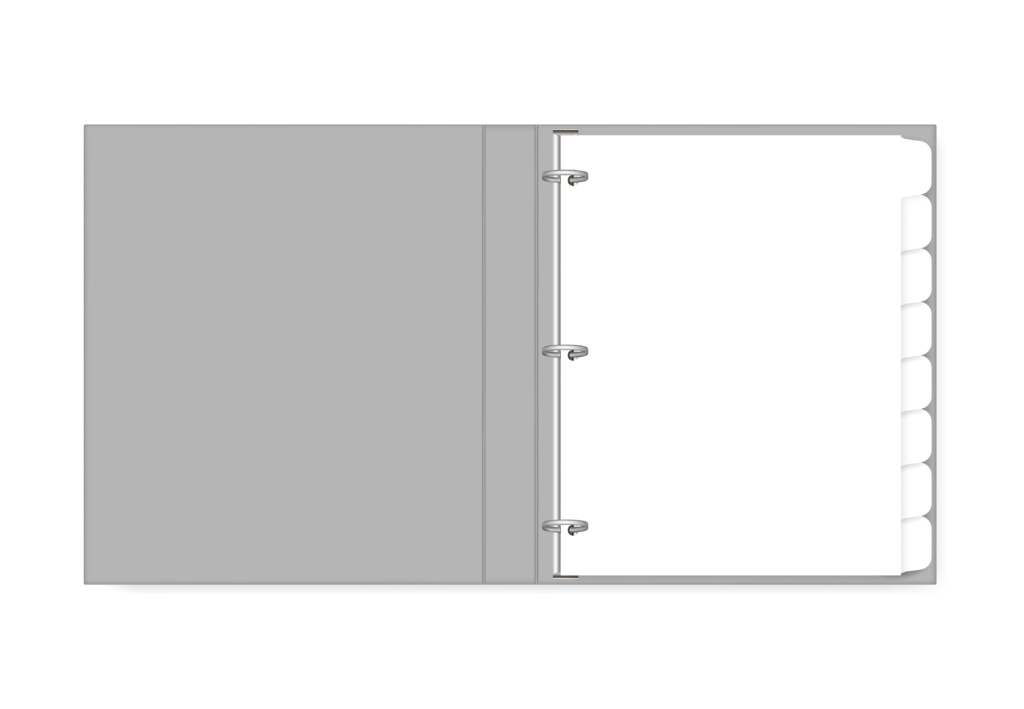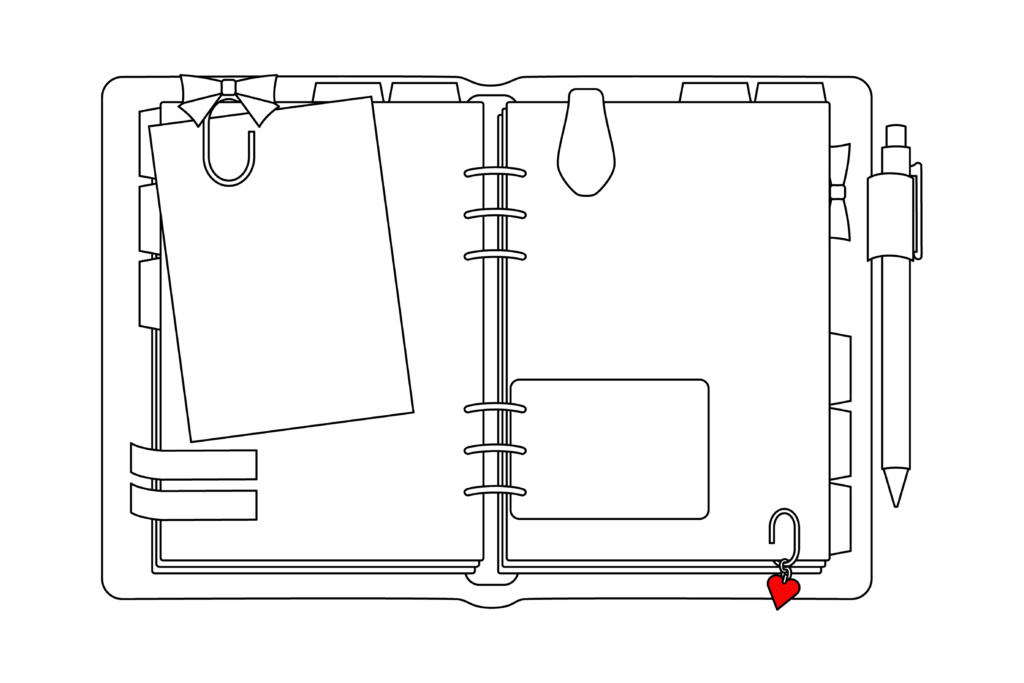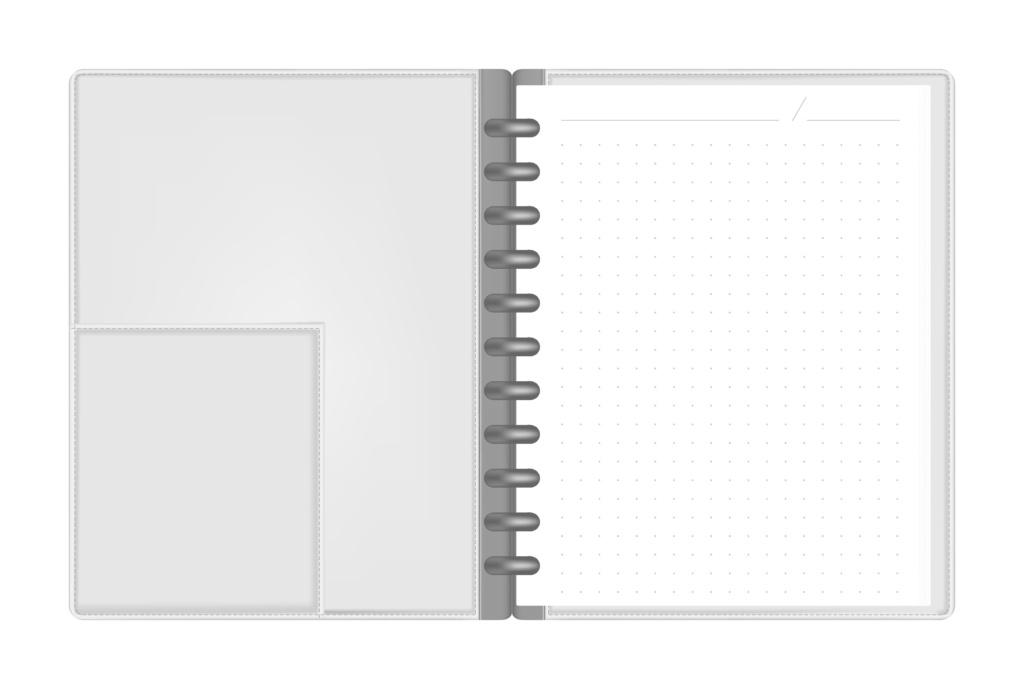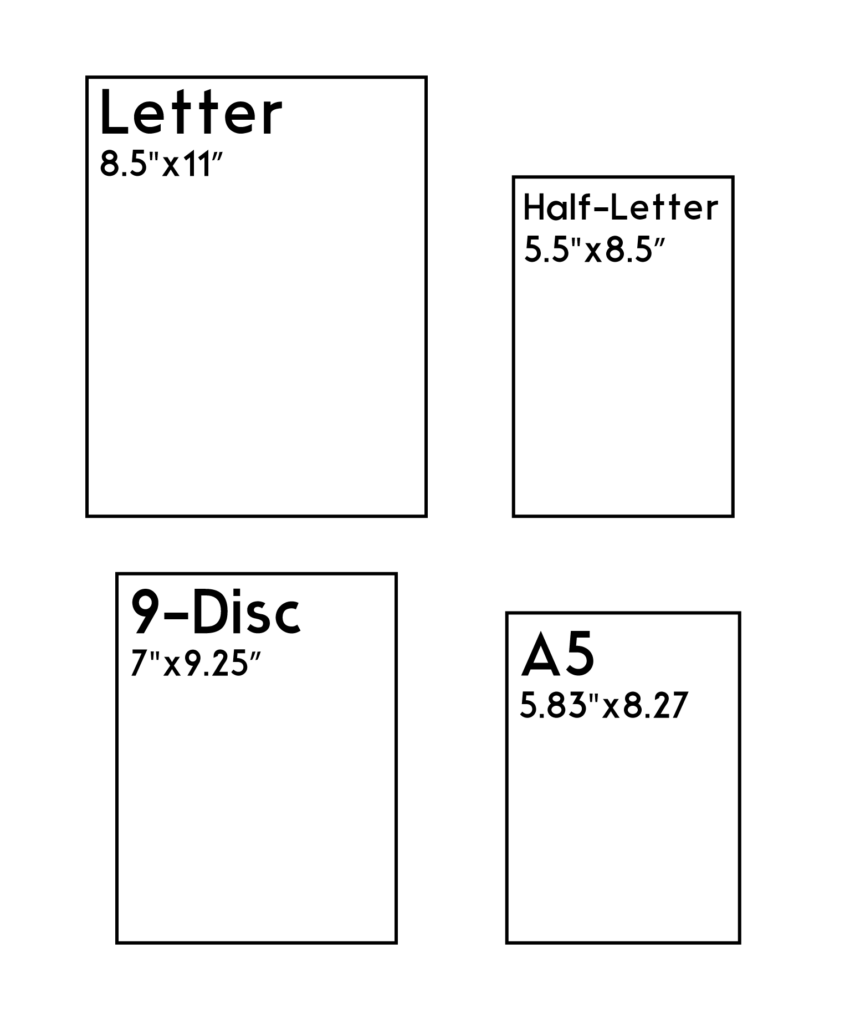
Creating your planner is great for people who want a customized solution tailored to their personal organization style.
Today, there is a lot of variation to what you can choose, so you can get a customized planner in exactly the size you want, in many templates, and in many paper thicknesses/sizes.
This guide will review some of the most popular DIY planner types and sizes and how to make them.
The Biggest Benefit a DIY Planner
One word:
Customization.
When you make your planner, you can choose any size, fill it with any template (or make your own), choose the paper that goes inside, pick a cover that matches your style, get accessories to improve the experience, and so on.
The only real limit is your imagination.
So, if you’re not 100% happy with pre-made planners, organizers, and notebooks that exist, perhaps a custom solution is what you need.
There are other benefits as well.
You can get a nice binder or cover for your notebook that will last you a long time because you don’t have to retire the entire thing when the pages run out.
Or you can put the pages in any order you desire (a big complaint of bound notebooks is the order of pages is not to their liking).
Regardless of the benefits, there are two DIY notebook styles that people (myself included) prefer, so let’s go over them.
The Two Most Popular DIY Planner Types
When it comes to DIY organizers, there are two types that I believe offer the best experience: Ring Binders and Discbound Notebooks.
Let’s go over each:
Ring Binders

A ring binder is something everyone has encountered at some point in their lives, probably when they were in grade school in the form of a Letter Size 3-ring binder.
The function is simple: you have paper with holes going along the side, and you open the rings of your notebook, add the paper, and snap the rings back.
Ring binders are readily available in a variety of sizes and styles, but let’s look at the pros and cons of ring binders to see if it’s right for you:
Pros of a Ring Binder
- Familiarity and simplicity
- Punched paper can be fed into a printer with no problems
- Cheap options are available at most big retail stores and online
Cons of a Ring Binder
- Typically, it cannot hold a lot of paper (unless you opt for very big rings)
- Bulky (locking mechanisms are no joke!)
- The front cover cannot be folded behind the back cover when writing.
- Hard to write near the rings
While letter-size 3-ring binders are what you probably already know of, there are 3 different sizes of ring binders to be aware of.
The 3 Different Sizes for Ring Binders
3-Ring letter size might be the size your mind thinks of first, but some options are more popular.
The three main ring binder sizes:
- Letter size. These hold traditional 8.5” x 11” copy paper and have 3 rings.
- Half-letter size. These hold 5.5” x 11” paper and are usually made by the Avery company. Just like letter sizes, they come with 3-rings.
- A5 size. This is an international size, a bit wider than half-letter and slightly shorter. A5 binders have 6 rings and are the most popular binder type for DIY planning.
Choosing what’s best for you is a matter of preference.
We support Letter, Half-Letter, and A5 sizes, so if you’re creating a planner with our templates, you can pick the size that suits you best.
If you’re looking for a binder in terms of materials available, A5 has the most support for customizability in the variety you can get, but Letter size has a lot of options as well.

Discbound Notebooks
Discbound notebooks are a unique style of notebook where pages have “mushroom” shaped holes cut into the edge of the page, and those pages are pressed into a set of discs that hold the notebook together.

Discbound notebooks, like ring binders, come in various sizes and have unique benefits.
Pros of a Discbound Notebook
- Less bulky than ring binders, offering a similar experience to spiral-bound notebooks
- A lot of customizability
- It can be entirely folded behind the back cover (also like a spiral notebook)
- Easier to write near the edges of the page
Cons of a Discbound Notebook
- Holes must be punched after printing your templates because pre-punched disc paper cannot be fed through a printer (the holes catch on each other).
- While less bulky than ring binders, it can still have a bit of heft.
Discbound Notebook Sizes
Discbound notebooks come in many sizes, and they all have unique names depending on the company making them.
For simplicity’s sake, we’ll classify them by the number of discs used by the paper.
- 7 Disc “Mini” size. This is an uncommon size and is only sold by Happy Planner. It’s their Classic size cut in half, so the dimensions are 4.625” x 7”.
- 8 Disc “Junior” size. This uses half-letter paper (5.5” 8.5”), and you will usually see notebooks from the Arc and TUL brands from Staples and Office Depot/Max.
- 9 Disc “Classic” size. This uses a unique size (7” x 9.25”) and is mainly made by the company Happy Planner. You’ve seen these if you’ve ever been to a Michaels or Joann Fabrics.
- 11 Disc Letter Size (8.5” x 11”). TUL, Arc, and Happy Planner use standard paper-sized disc-bound notebooks using 11 discs.
There are a few other sizes (like 12 discs for A4 size paper), but no one uses them.
Making Your Planner
Step 1: Pick your size and type
Now that we’ve reviewed the sizes and types above that have the most support regarding what’s available, you can see which style and size best suits your needs.

Step 2: Pick Your Paper
Did you know most of the copy paper you buy at retail stores is atrocious?
Regarding paper, its thickness is measured by a metric called GSM (grams per square meter). A higher number means thicker paper.
Reams of copy paper you buy at stores are typically between 70 GSM and 80 GSM, which, by most measures, is terrible.
If you print on both sides of 70 GSM paper, you will have extreme ghosting (seeing what’s printed on the opposite side) and bleedthrough when writing (ink bleeding through the page to the other side of a sheet of paper).
If you’re printing a throwaway sheet, this is mostly fine, but thin paper is an abysmal experience for planning.
When buying pre-printed templates or blank paper to print on your own, you want to stick with 100 GSM paper at a minimum, 120 GSM for a more robust paper, or 160 GSM for a very thick paper that will stand up to a lot of punishment (heavy ink usage, highlighting, even water coloring).
Now that you have your preferred notebook type and size and your favorite paper thickness, you can pick what you want to go inside your planner.
Step 3: Choose Your Templates and Planning Goals
Everyone has different goals when it comes to having a written planner.
Some want a general daily planner, some like bullet journaling, others write so much they need extra lined paper to brain dump, and others only need to plan every week (if that!).
You can keep your to-do list, log fitness progress, schedule time, plan meals, track habits, journal, keep recipes, and more.
It all depends on what you want to achieve and how much you can write.
Of course, templates are where DIY planning excels.
The benefits of going with templates over notebooks:
- You choose exactly which page goes in exactly the order you prefer
- They are more cost-effective than notebooks
- Print your templates, download and print templates someone else made, or buy packs of pre-printed templates.
Printing templates is a great way to “try” different types of planning without committing to buying a notebook you’ll have collecting dust somewhere.
Where to download free templates for your planner
This site, of course!
We offer an ever-growing collection of templates you can download at any time for our 4 main supported paper sizes:
With these, you can make a daily planner, weekly planner, bullet journal, regular journal, and more.
Best of all, we will never ask for your email, make you sign up for anything, or charge for templates. They all live on a public Google Drive you can download any time.
If you’re looking for paper to print templates on, we have a large variety of blank paper in our supported sizes in multiple GSM levels:
A5: 100 GSM, 120 GSM, and 160 GSM
Half-Letter: 100 GSM
7” x 9.25”: 120 GSM
All paper is conveniently on Amazon which has by far the fastest shipping times.
Where to buy pre-printed templates
We sell those, too!
If you’re not looking to print all the time, we offer a wide variety of lined templates, dot grid templates, and planning templates in all sizes and paper thickness.
Letter:
3-Hole: Dot Grid
No Holes: Lined (160 GSM), Dot Grid (120 GSM), Dot Grid (160 GSM)
7″ x 9.25″ 9-Disc: Dot Grid, Lined, Daily Plan, Weekly Plan
Bringing it all together.
Once you know of the options available to create your own planner, it’s pretty self-explanatory how to move forward.
Figuring what size, type, paper, and templates work best for you is all that need to get started, so good luck and get planning!